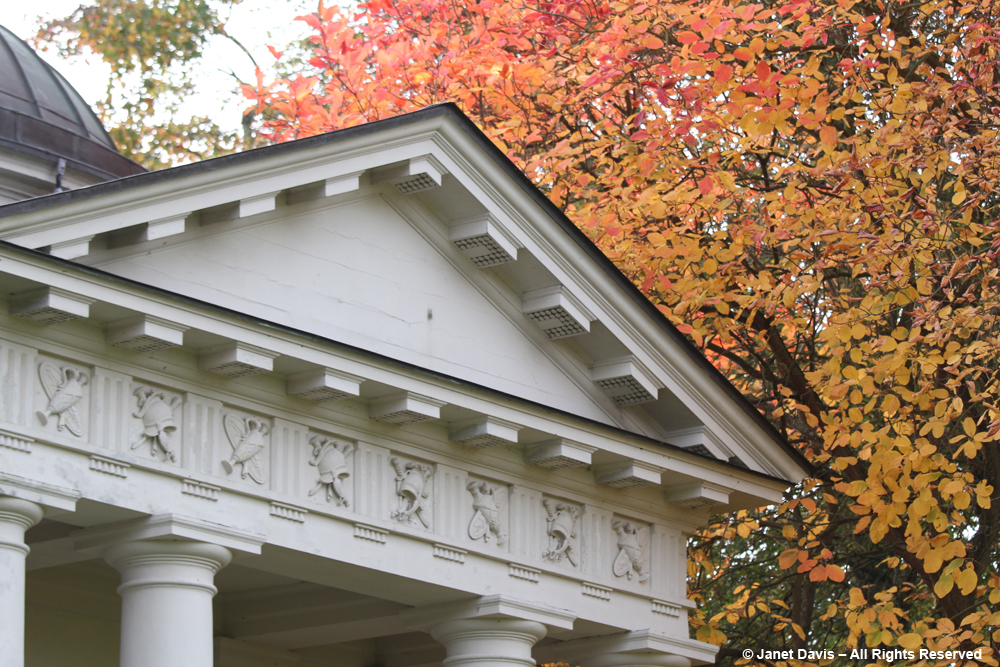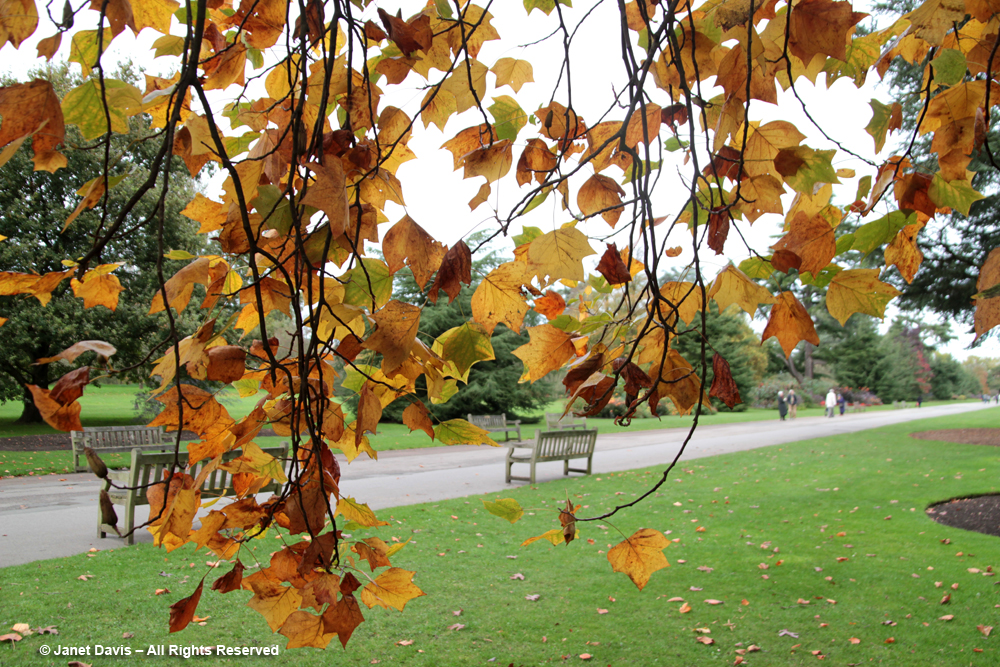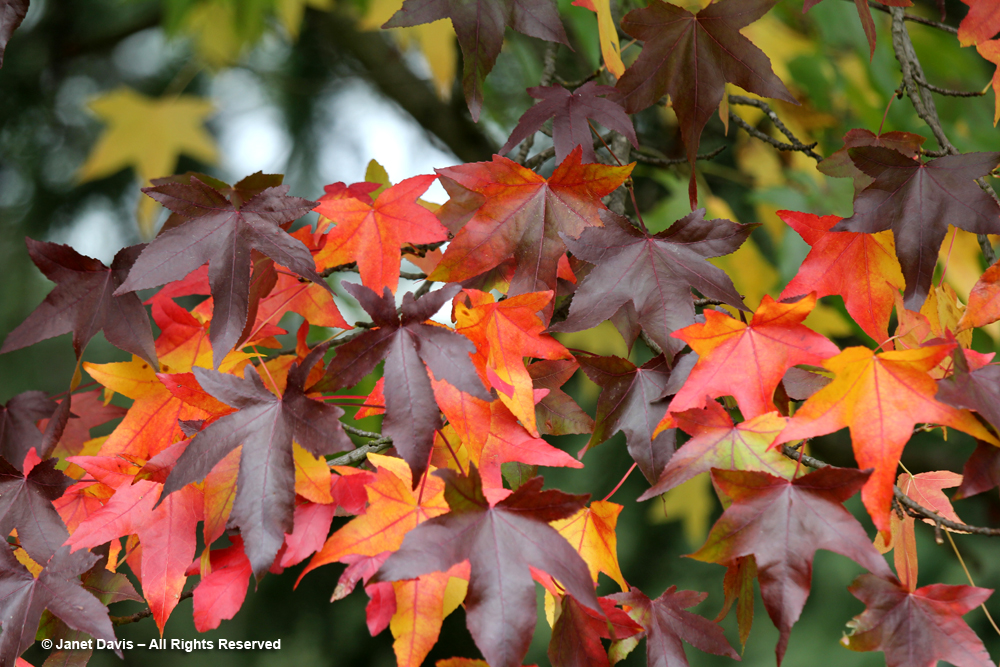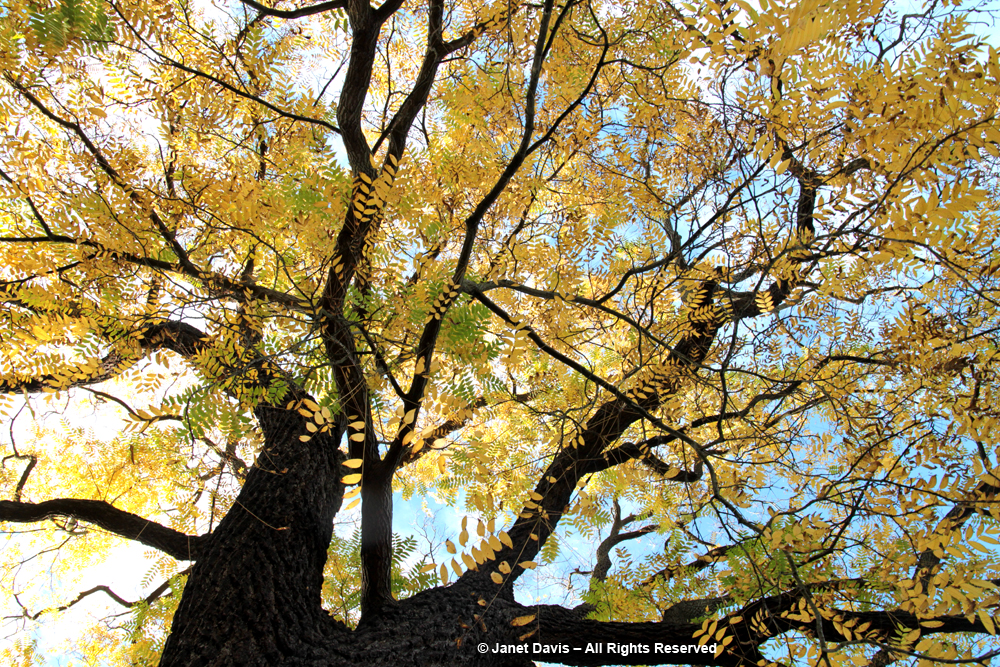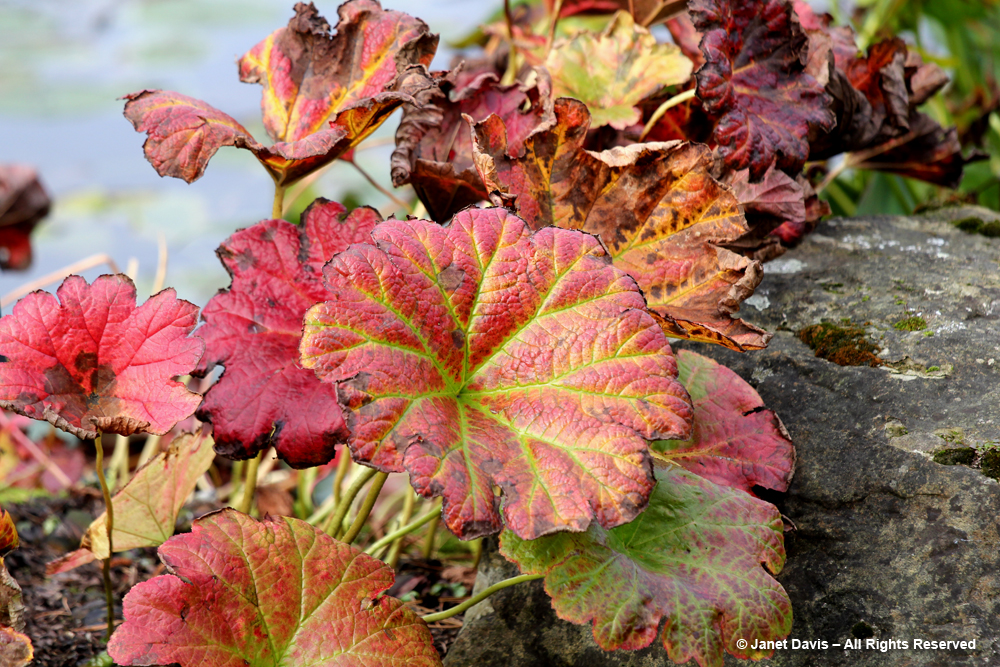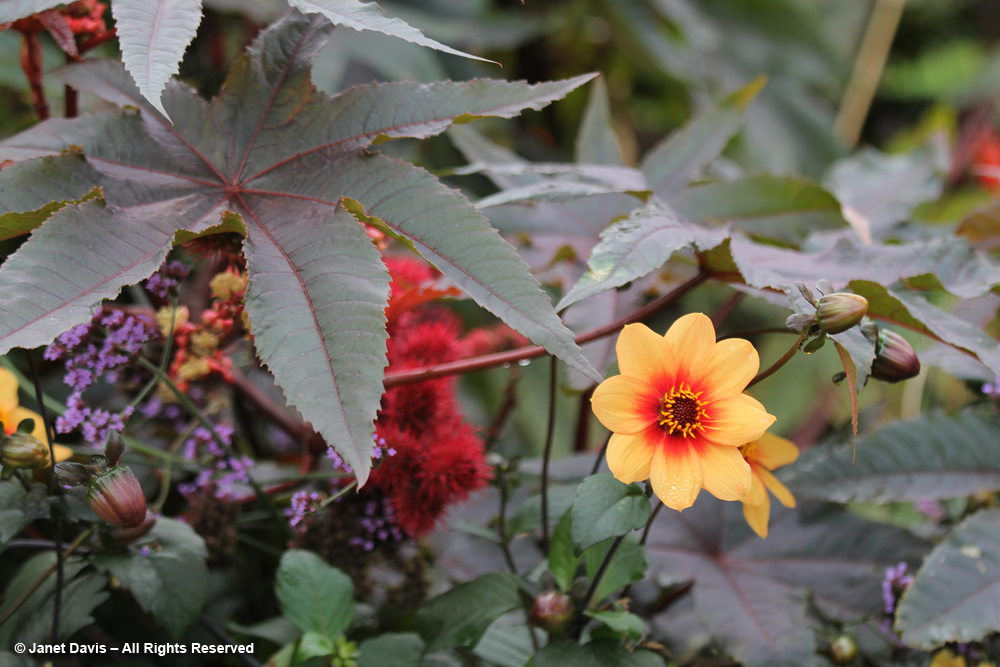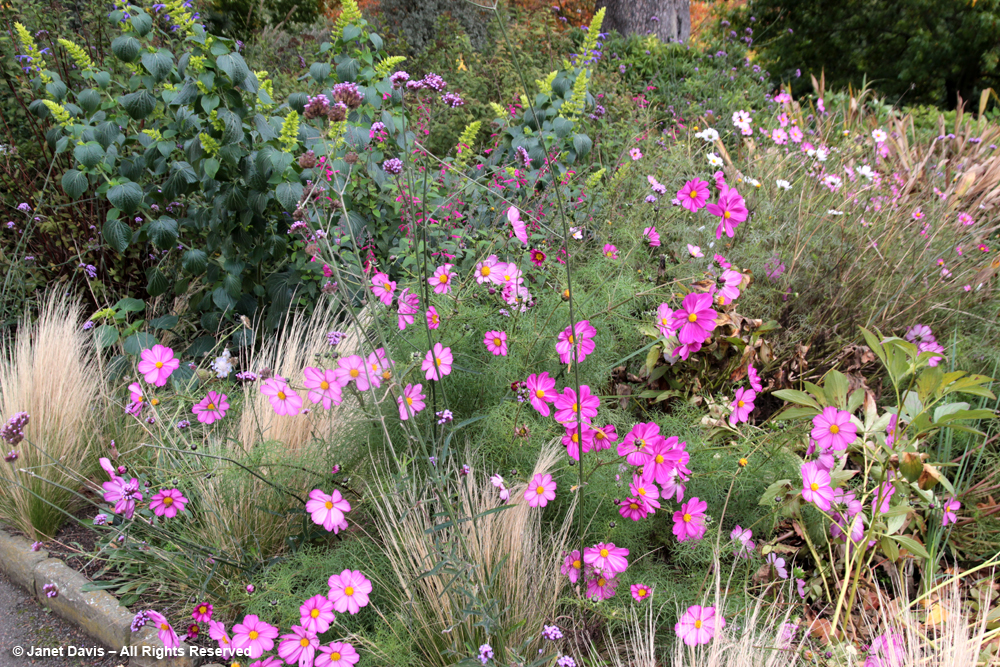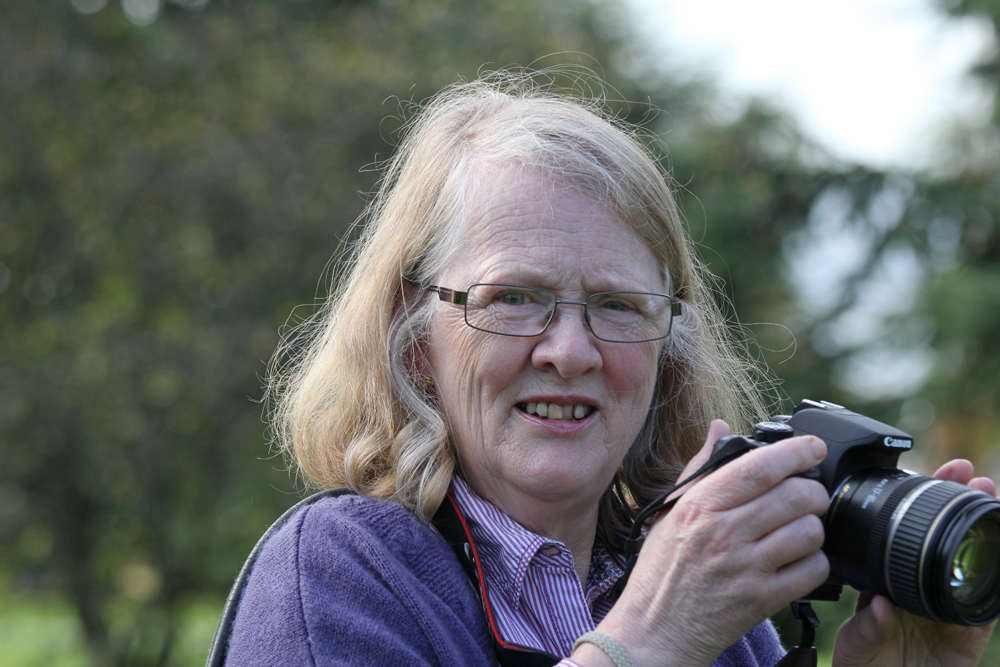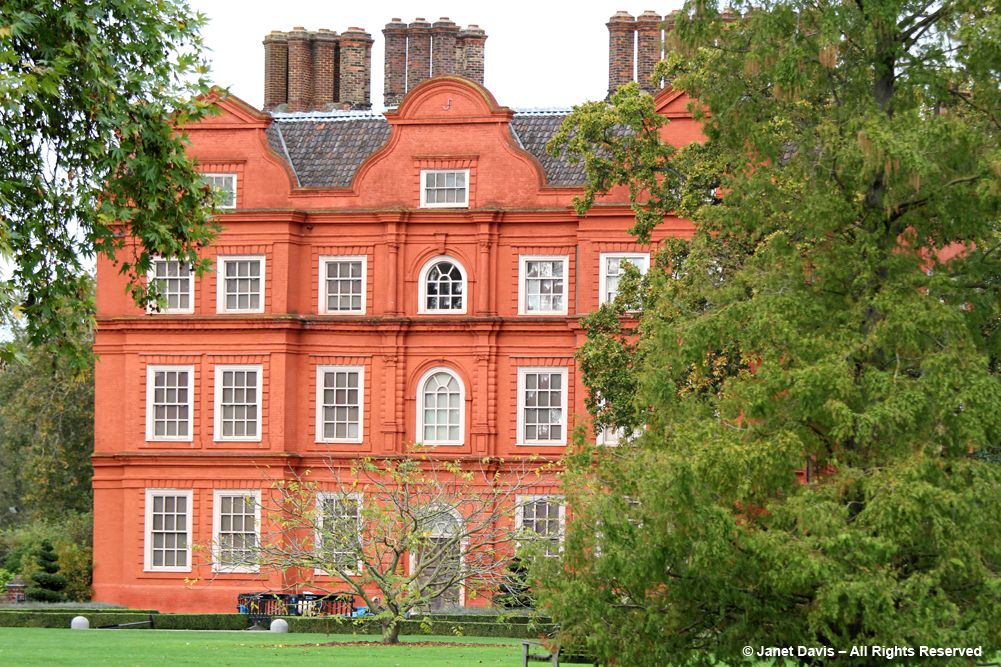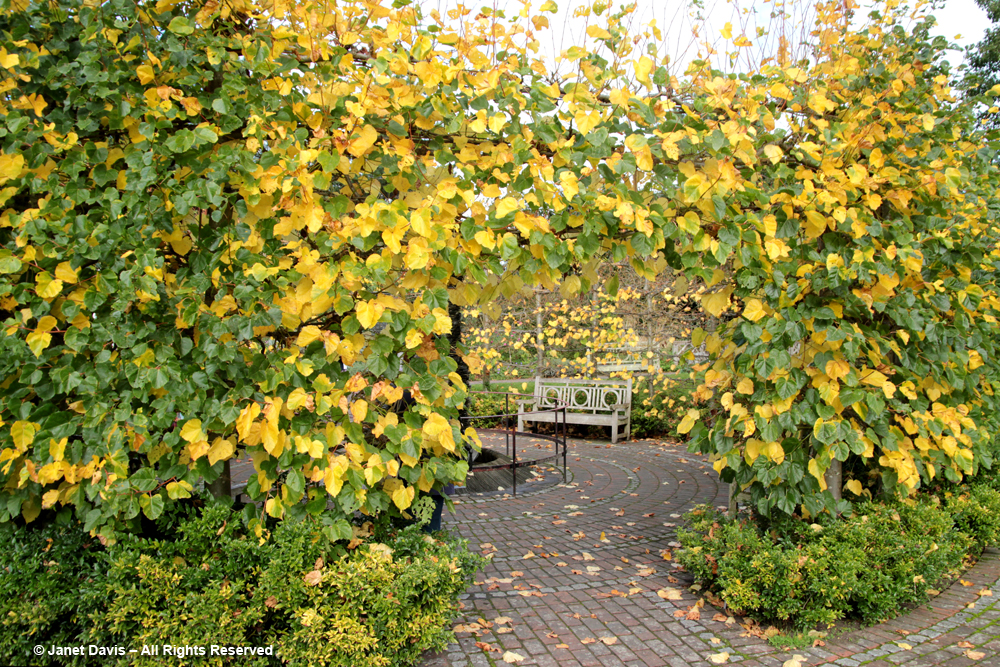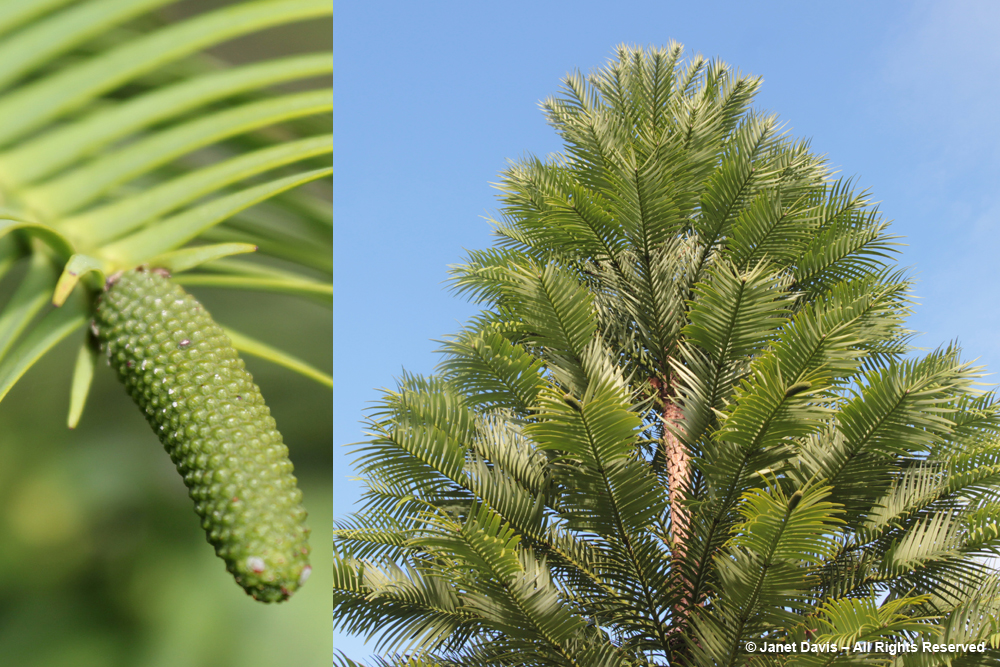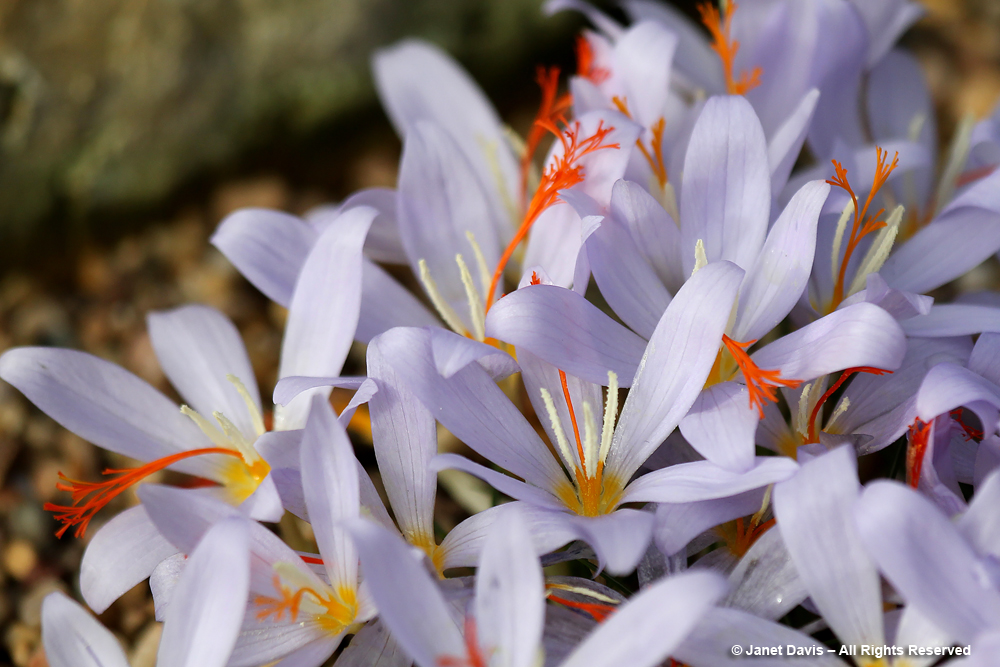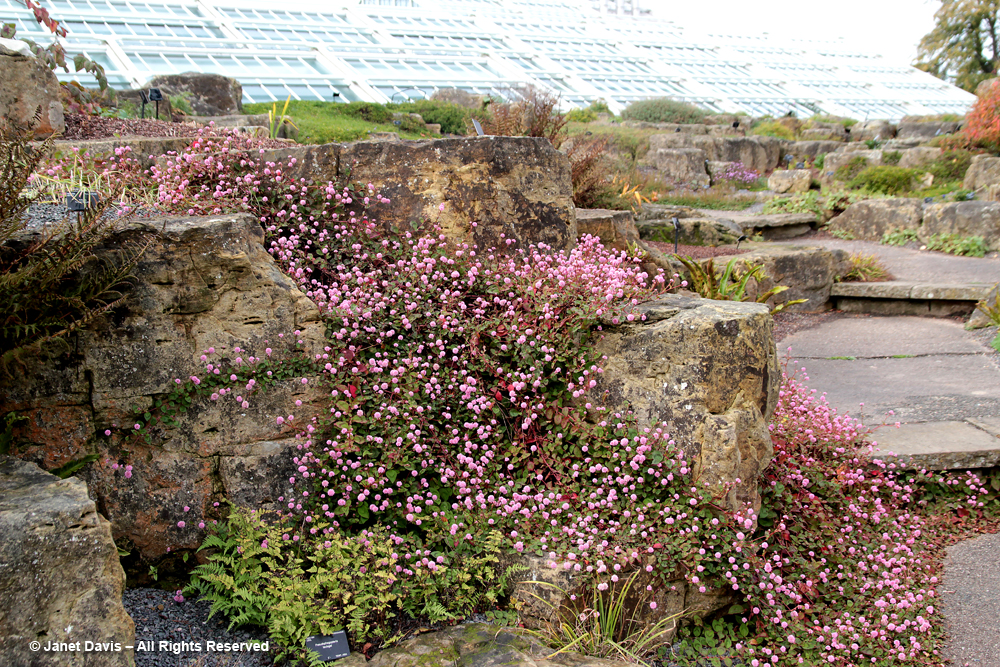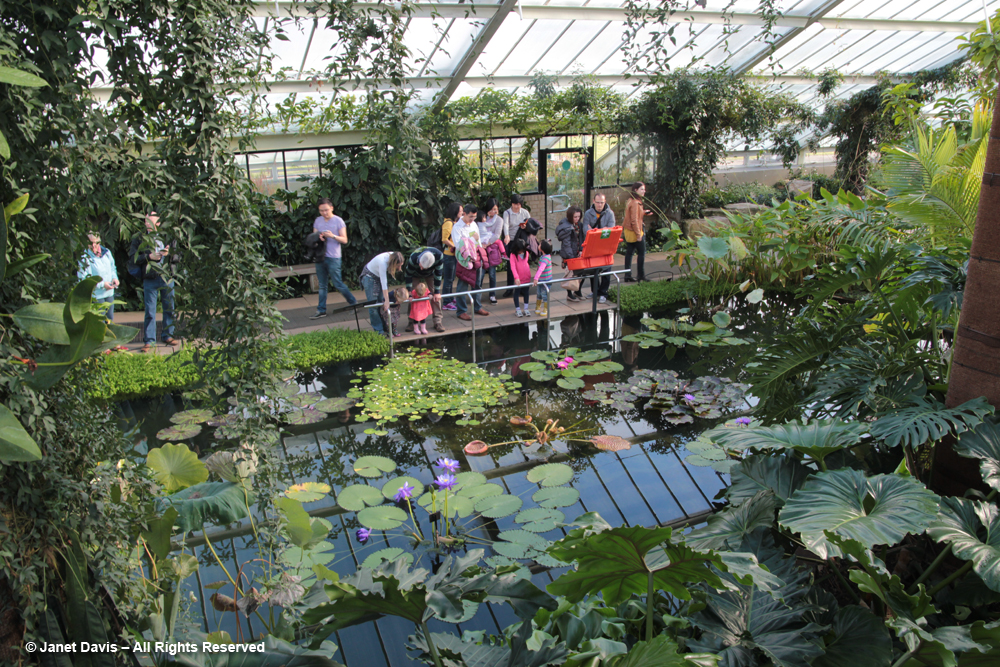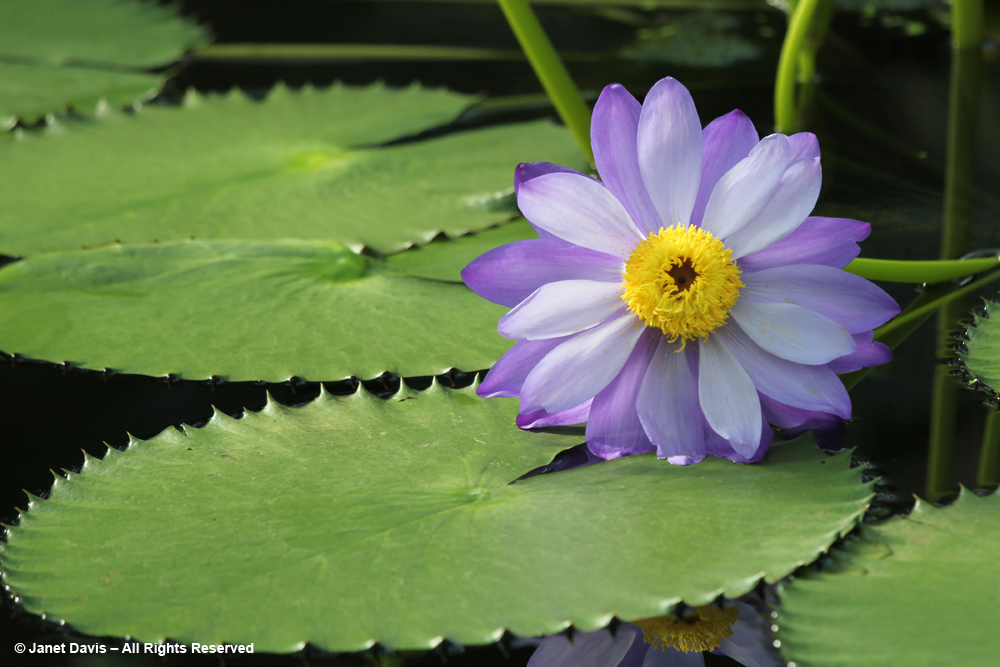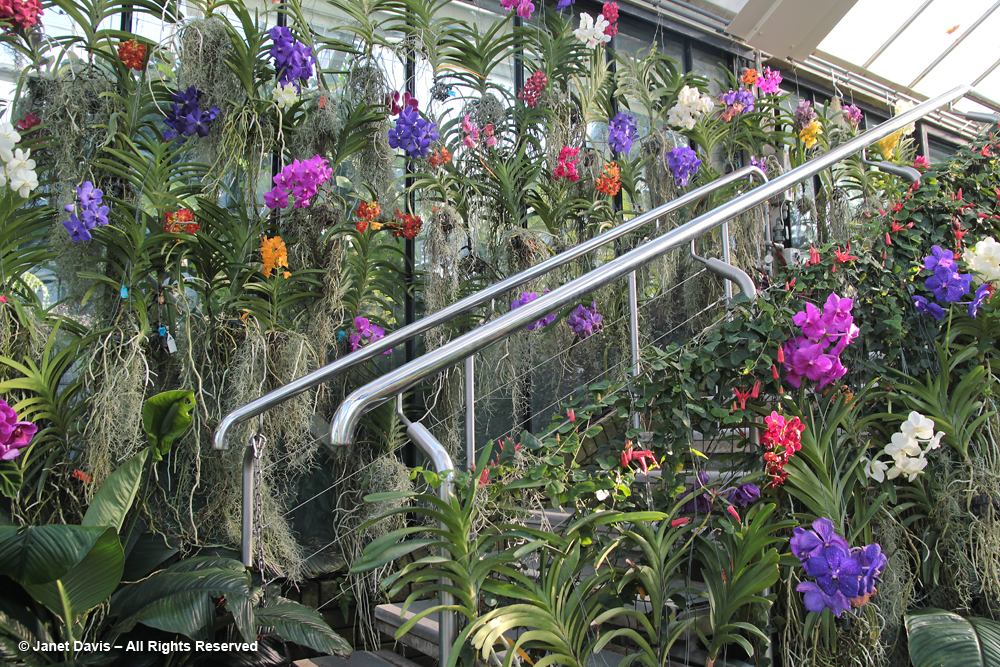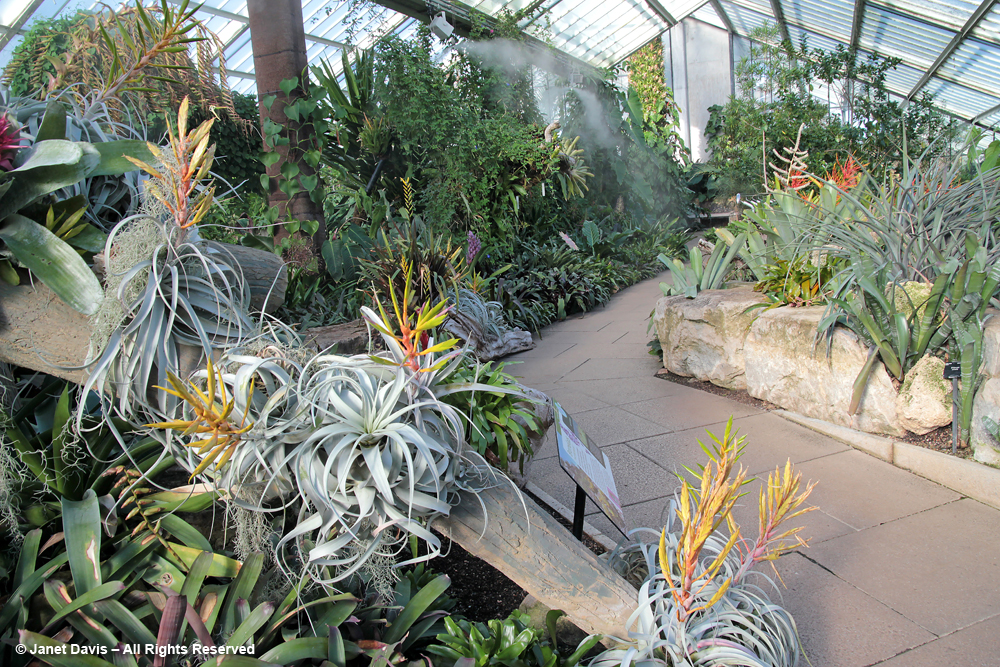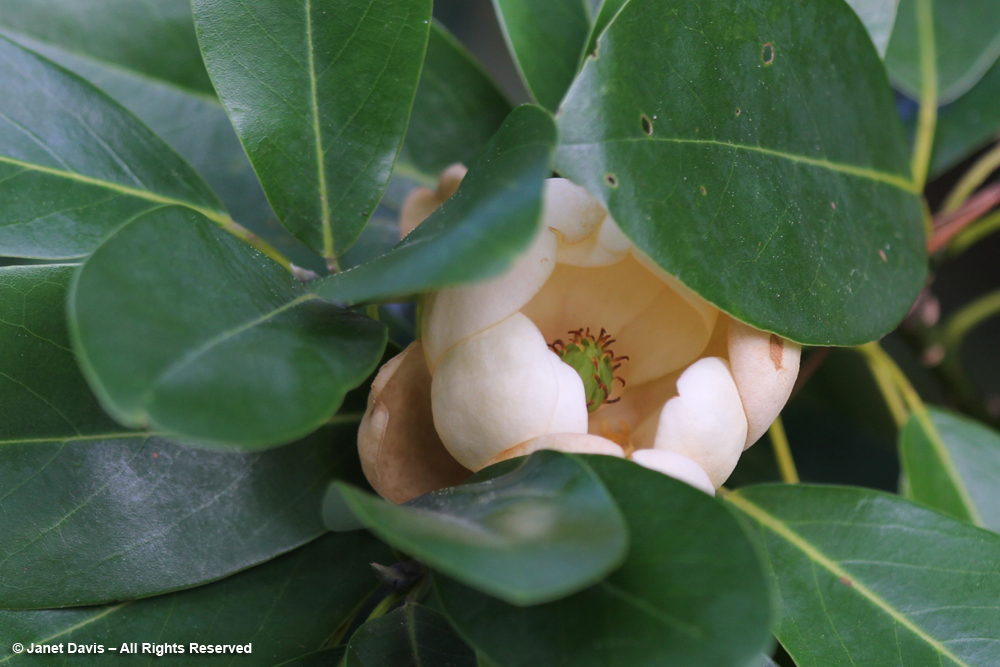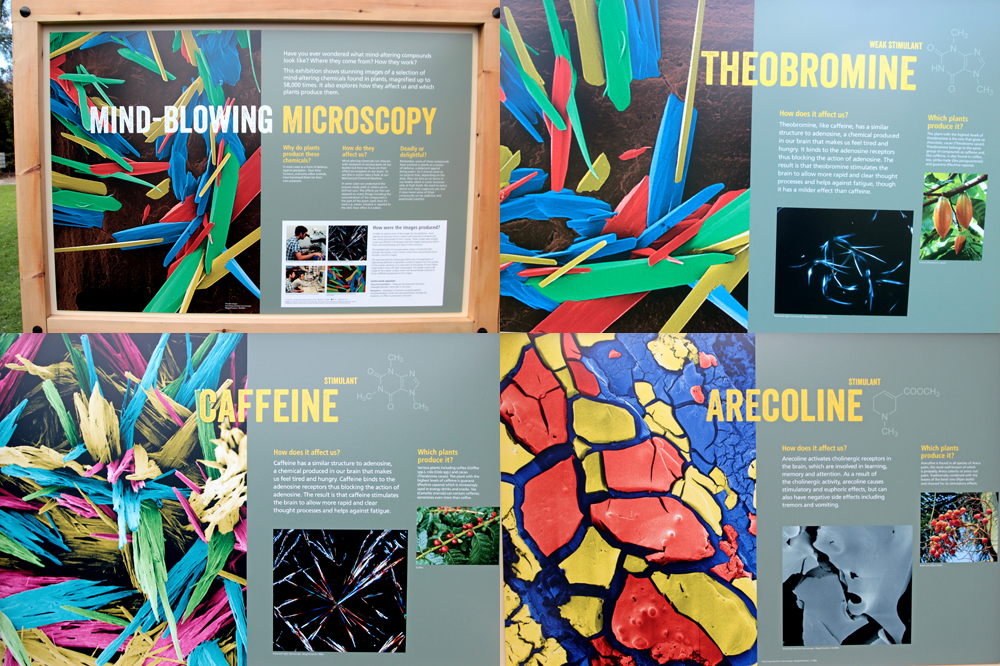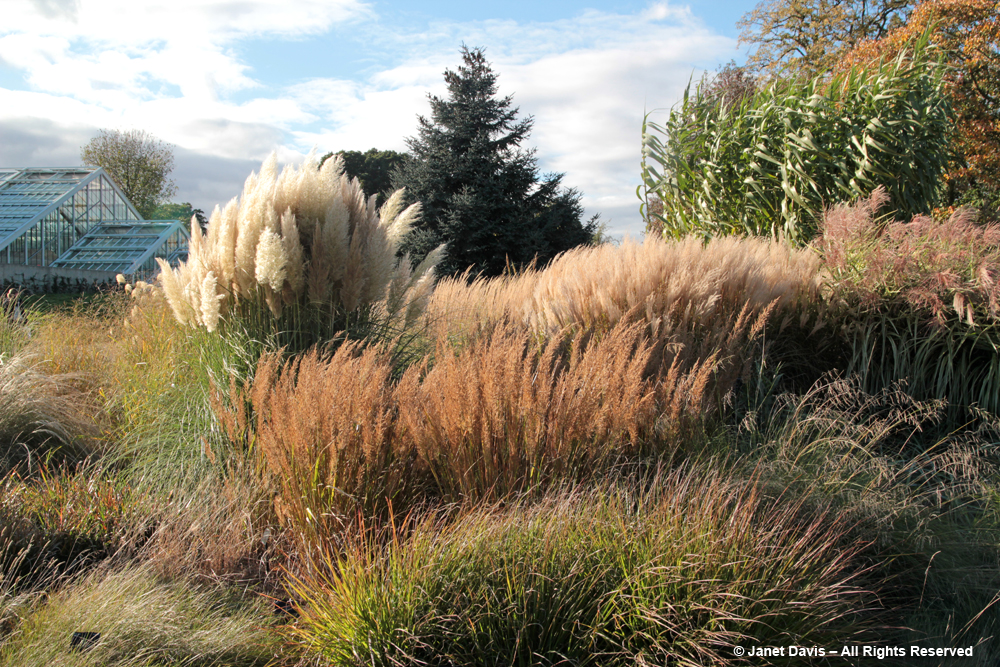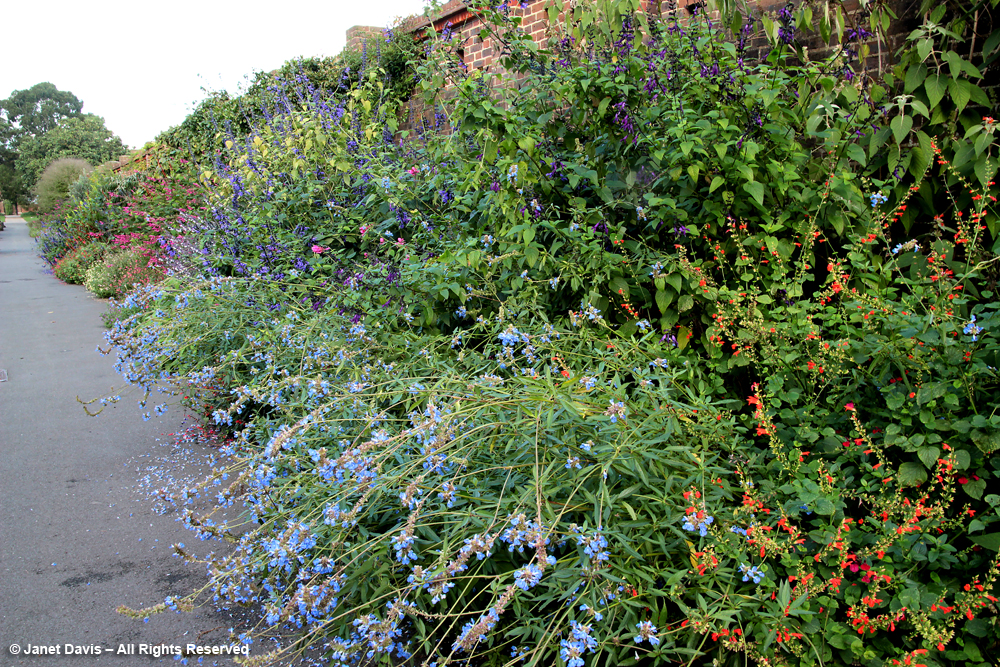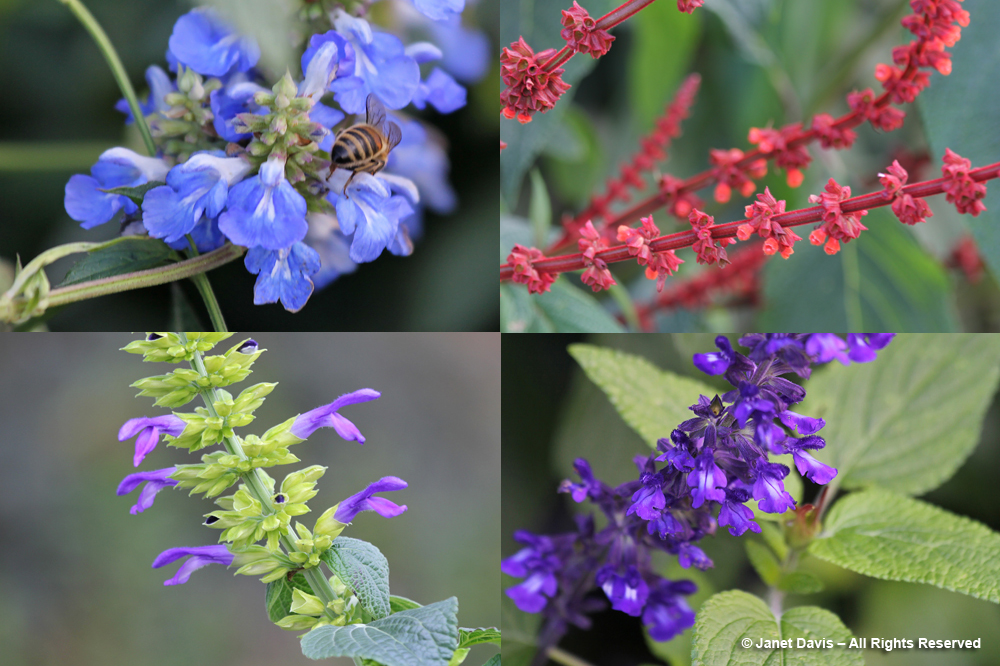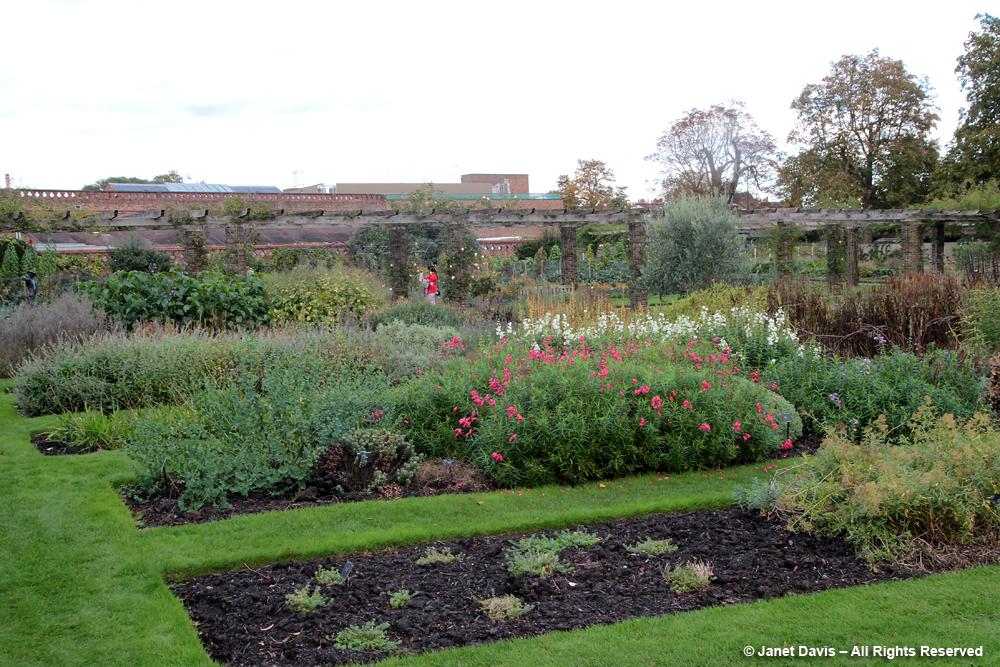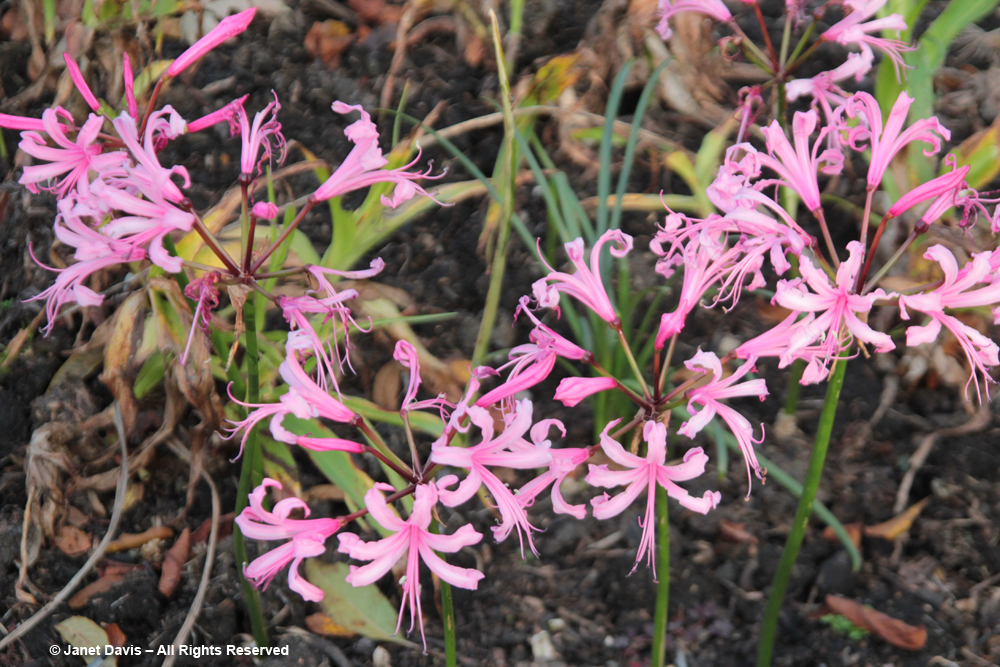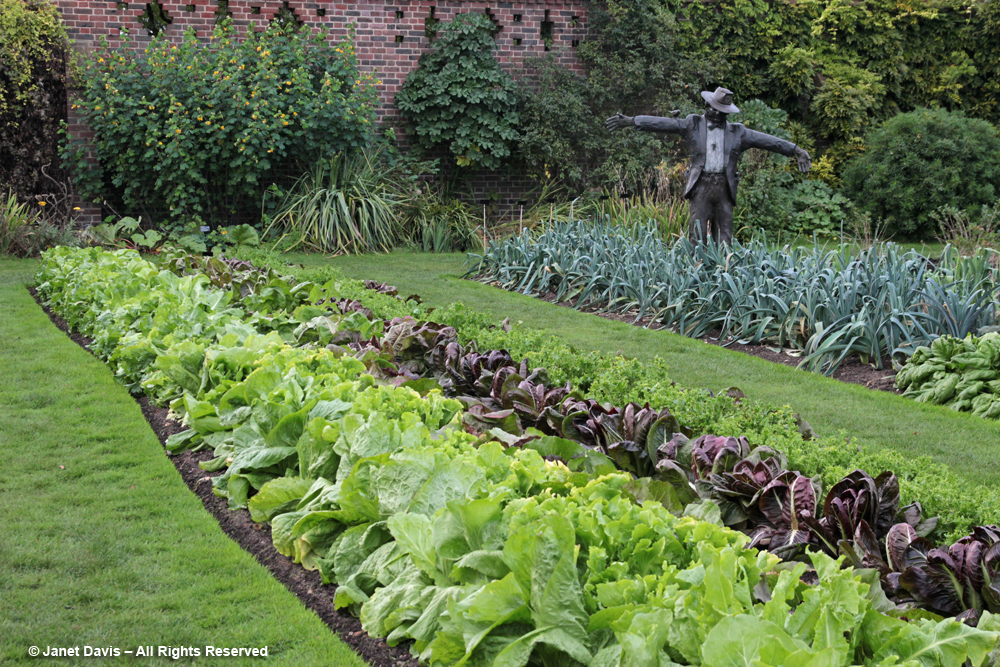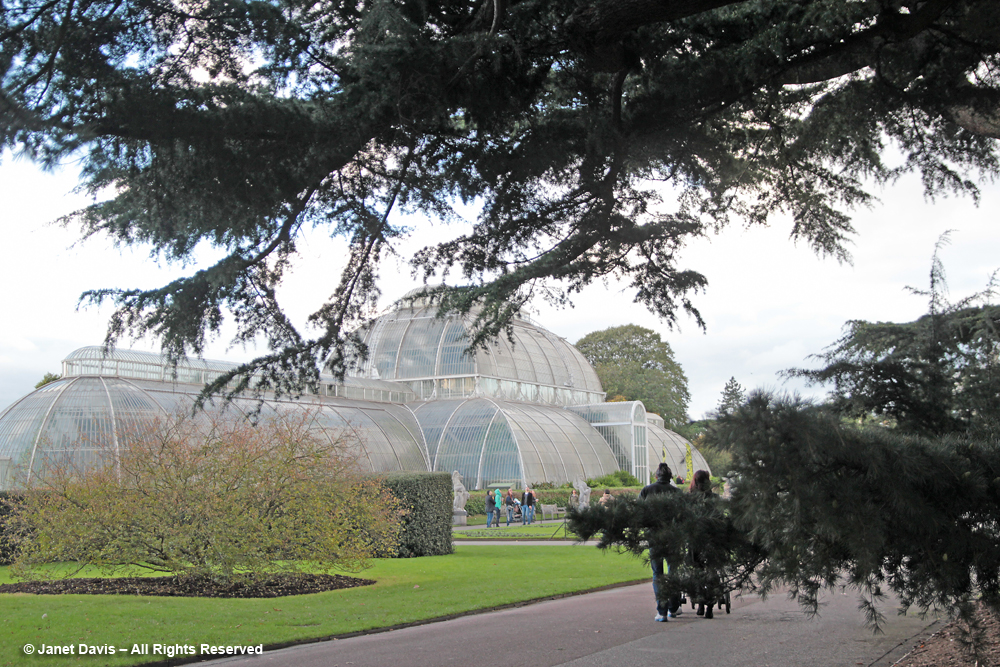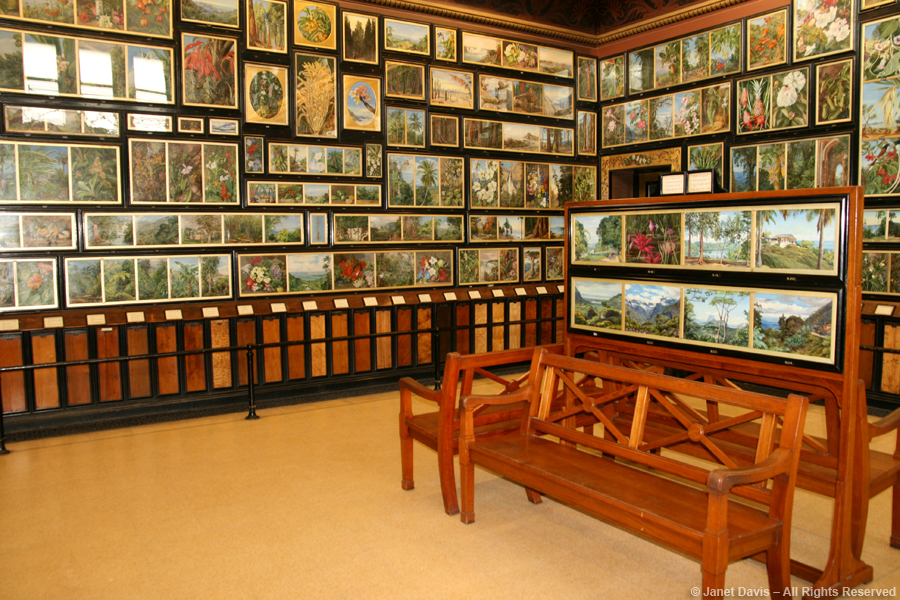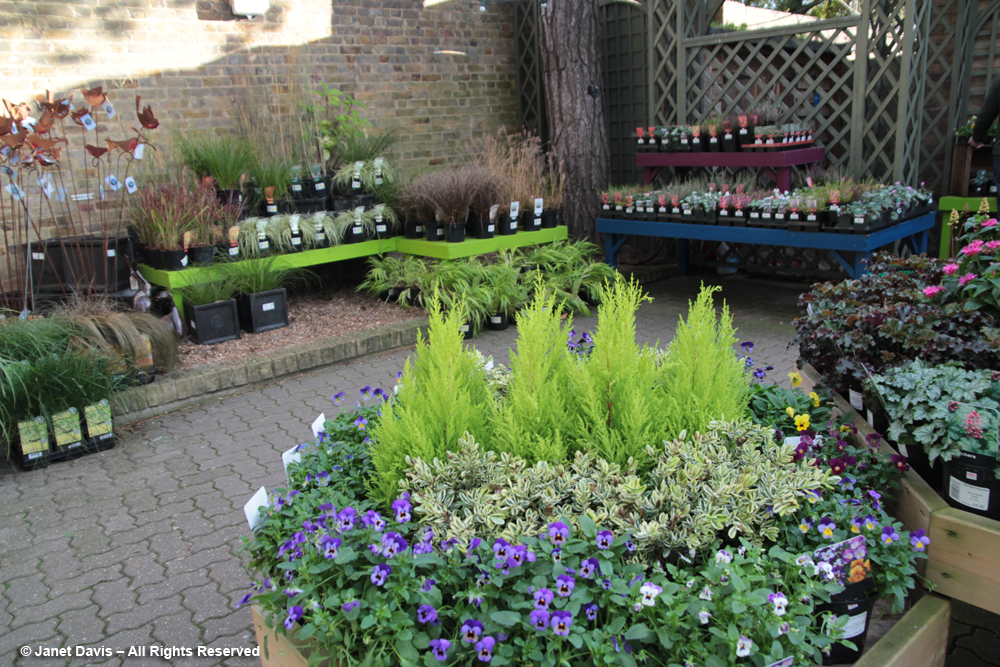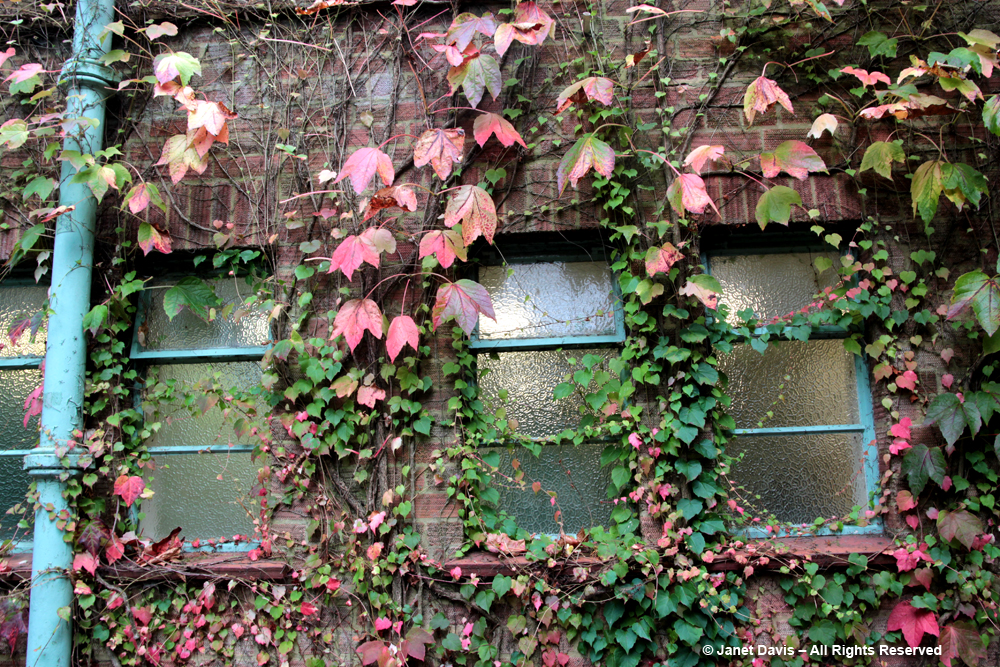A long October weekend in London…… Barely enough time to be a proper tourist, but certainly enough time to pay my customary visit to the Royal Horticultural Society Garden at Kew Gardens, aka “Kew”. Not to see it all, of course – that would take a very concentrated effort, especially arriving as I did in late morning and having to depart for a 5:30 pub dinner on Clarence Square in central London. But I saw enough to delight the senses, especially in a week when I also visited Kirstenbosch Botanical Garden in Cape Town!
Autumn colour was everywhere, but especially impressive in the American smoke tree (Cotinus obovatus) overhanging Kew’s Temple of Bellona.
The big tulip poplars (Liriodendron tulipifera) leading to the Orangery Restaurant had turned a beautiful golden-bronze.
Kew’s sweetgum trees (Liquidambar styraciflua) were wearing their multi-hued fall party dresses, too.
The towering black walnut (Juglans nigra) looked luminous in the afternoon sunshine, its big limbs supported with cables in its old age.
Even the umbrella plant (Darmera peltata) foliage was turning colour – a nice bonus for a marginal aquatic that flowered months earlier.
Bumble bees and honey bees were all over the single dahlias in the flower beds along the great walk, and the castor beans (Ricinus communis) made pretty partners..
And beside the Orangery, the cosmos were still putting out lots of blossoms.
As luck would have it, my Facebook friend Margaret Easter had contacted me before I left for South Africa and proposed we meet at Kew on my short stop in London on the way home to Toronto. What a great idea! I’ve done the same thing with Facebook friends in California. “Let’s have lunch together at the Orangery”, I suggested. And so we did, then trooped out with our cameras to while away a few afternoon hours.
There was no time to do the Kew Palace, sadly, even though I knew there was a great little garden behind that pretty building. During the late 1700s, it was the summer home of King George III and Queen Charlotte and their 15 children. When he developed mental illness in his later life (remember the film ‘The Madness of King George’?), it also became his sanitarium, and included strait jackets and cold baths. His granddaughter Victoria became one of England’s most famous monarchs.
We walked through the lovely Secluded Garden, which includes this pretty gazebo made of pleached lime trees (Tilia x euchlora). Inside is a sculpture.
And it was a big treat for two plant geeks to see the rare and recently discovered Wollemi pine (Wollemia nobilis) without the zoo-like fence that once surrounded it. According to Kew, it is: “The only remaining member of an ancient genus dating back to the time of the dinosaurs, over 65 million years ago. This fascinating tree was only discovered in 1994, causing great excitement in the botanical and horticultural worlds.” Kew’s tree had even grown old enough to form cones.
We strolled through the elegant little Alpine House and had a look at some of the treasures Kew keeps there.
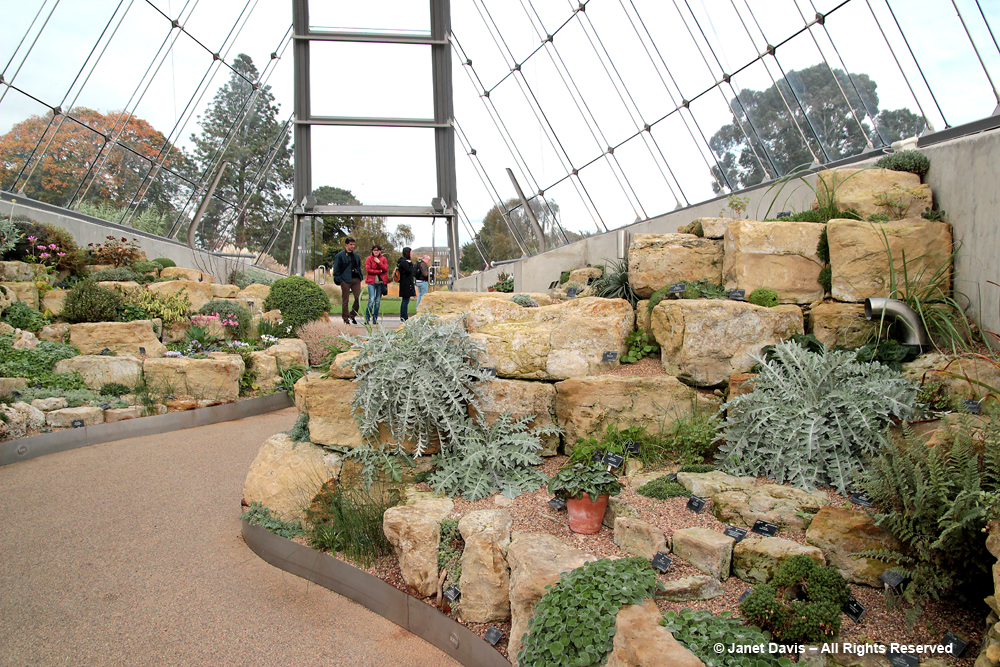 In autumn, there are many lovely fall-blooming bulbs, like the pretty Tournefort’s crocus.
In autumn, there are many lovely fall-blooming bulbs, like the pretty Tournefort’s crocus.
Connecting the Alpine House to the Princess of Wales Conservatory was a sprawling rock garden with a surprisingly large number of plants still in flower. Margaret even found the accession label for one of her own thyme discoveries (she is a writer, speaker and holder of National Plant Collections® of thymus, hyssopus and satureja.) I liked this creeping persicaria (P. capitata), which was feeding loads of honey bees.
The Princess of Wales Conservatory is a favourite stop for visitors, especially on a cool autumn or winter afternoon, as it contains tropical plants that must be kept warm and humid. It was built in the late 1980s to replace a number of smaller greenhouses. Though opened in 1987 by Diana, the Princess of Wales, it is dedicated to an earlier Princess of Wales, Princess Augusta, the founder of Kew Gardens. The water garden inside is beautiful.
Everyone loves water lilies, of course, especially the gorgeous ‘Kew’s Stowaway Blues’ with its lush purple blossoms.
This one is much showier than the tiny, rare Nymphaea thermarum, billed as the smallest water lily in the world and the subject of a brazen theft in January 2014. The crime, still unsolved, has been the subject of much media interest in the months since.
There is a fabulous orchid collection in the conservatory, with some of the finest specimens arrayed fetchingly up the staircase to the upper level.
Upstairs, the bromeliads get misted regularly, creating the cloud forest conditions necessary for these rainforest beauties to thrive.
Outdoors again, we put on our coats and sauntered towards the enclosed Plant Family garden. On the way, I noticed that the spring-flowering sweetbay magnolia (M. virginiana) had put up a few shy autumn blooms.
Education is a prime focus of Kew and these interpretive signs mounted along the walk highlight the intersection of plant cells and useful botany, via some amazing microphotography.
The ornamental grass garden was in its lush October glory, the big miscanthus and panicum species swishing in the wind.
Outside the enclosed Plant Family garden, the sage border was at peak bloom, showcasing the fall value of these wonderful plants (many here are true shrubs).
For anyone wanting to grow salvia species and cultivars, this border is a must-see in late summer and autumn. Honey bees and bumble bees, of course, call it a “must-bee” border.
The hour was growing late, but there was time to wander inside the walled garden to see what was still in bloom.
There were penstemons, dahlias, sennas and the odd rose. Nerines are always an autumn treat, where the season is long enough.
And the students’ vegetable gardens looked quite superb!
But sadly, our afternoon was coming to a close. I looked longingly at the big Palm House, framed with the magnificent cedar of lebanon (Cedrus libanyi), but it needs at least an hour to do it justice, and wasn’t to be.
I have visited the Marianne North Gallery on every Kew trip, but that lovely haven would have to wait for another visit as well. Here’s a photo from 2008.
Just a few minutes for a stop in the plant sale area. Nothing to buy for me, of course, but I’d have loved to tuck a few goodies into my suitcase.
And is it just me, but is this not the prettiest wall ever, with its aquamarine downpipe and window frames and fall-burnished Boston ivy (Parthenocissus tricuspidata)? It was my last stop: the Kew Loo! And on that note…….

